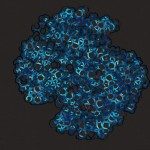Link to Pubmed [PMID] – 36151373
Link to DOI – 10.1007/978-3-031-00793-4_2
Subcell Biochem 2022 ; 99(): 35-82
ATP-binding cassette (ABC) transporters are one of the largest families of membrane proteins in prokaryotic organisms. Much is now understood about the structure of these transporters and many reviews have been written on that subject. In contrast, less has been written on the assembly of ABC transporter complexes and this will be a major focus of this book chapter. The complexes are formed from two cytoplasmic subunits that are highly conserved (in terms of their primary and three-dimensional structures) across the whole family. These ATP-binding subunits give rise to the name of the family. They must assemble with two transmembrane subunits that will typically form the permease component of the transporter. The transmembrane subunits have been found to be surprisingly diverse in structure when the whole family is examined, with seven distinct folds identified so far. Hence nucleotide-binding subunits appear to have been bolted on to a variety of transmembrane platforms during evolution, leading to a greater variety in function. Furthermore, many importers within the family utilise a further external substrate-binding component to trap scarce substrates and deliver them to the correct permease components. In this chapter, we will discuss whether assembly of the various ABC transporter subunits occurs with high fidelity within the crowded cellular environment and whether promiscuity in assembly of transmembrane and cytoplasmic components can occur. We also discuss the new AlphaFold protein structure prediction tool which predicts a new type of transmembrane domain fold within the ABC transporters that is associated with cation exporters of bacteria and plants.


